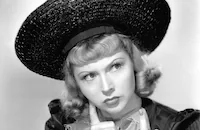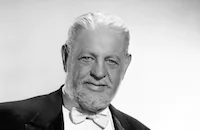Spring Madness

Brief Synopsis
Cast & Crew
S. Sylvan Simon
Maureen O'sullivan
Lew Ayres
Ruth Hussey
Burgess Meredith
Ann Morriss
Film Details
Technical Specs

Synopsis
Harvard senior Sam Thatcher and his roommate, The Lippencott, have been planning to go to Russia together after graduation because they think that the economic situation in the United States is too severe. Unknown to The Lippincott, Sam has been seeing New England College for Women student Alexandra Benson, and is having a difficult time chossing between "Alex" and Russia. Meanwhile, on the train home from Easter vacation, Alex's friends try to convince her to have Sam come up to their Spring dance, especially after one of them, Frances, who is The Lippencott's cousin, tells them about the planned trip to Russia. Sam receives Alex's invitation to the dance on the same day that The Lippencott discovers that the only boat they can take to Russia is leaving two weeks before graduation and the night before the dance. Even though Sam tells his roommate to meet him in New York with their passports and writes Alex a note saying "impossible to make dance," The Lippencott is certain that Sam will be at the dance instead of New York and follows him to the college. Sam tells Alex that he loves her but thinks that marriage is a futile gesture in hard economic times. Though Alex bravely pretends to agree, she is shattered and rushes back to her sorority house to sob. The next day, Alex's friends mobilize to help her. Mady Platt calls her newspaper publisher father and asks him to make a job to offer Sam, who edited the Harvard student newspaper. Next, Sally works out a secret arrangement with the police chief and Kate talks their young professor, Walter Beckett into feigning a romance with Alex. Finally, just as Frances tells Sam that Alex and Beckett are having a romance, Sam receives the telegram from Mr. Platt about the job offer. Suddenly confused and jealous, Sam goes to the sorority house to see Alex, followed by The Lippencott, who suspects that the telegram is too much of a coincidence. Through Sally's prior arrangement with the chief of police, the boys are arrested and thrown into jail, then released just prior to the dance. Sam then tries again to see Alex and leaves The Lippencott with his car. Sally has arranged for her friends Buck and Doc, both Yale men, to destroy Sam's car, after which they stuff The Lippencott in the rumble seat. In a confusion of people coming and going, Sam doesn't get to talk with Alex and instead sees her leave for the dance with Becket. Now fuming with rage, Sam punches The Lippencott and blames him for all his romantic troubles. He then drives his wrecked jalopy to the dance with The Lippencott back in the rumble seat. At the dance, when Sam sees Alex dancing with Beckett, he grabs her away and tells her that he can't live without her. Finally resolved to Sam's inevitable fate, The Lippencott then throws their passports into the punchbowl.

Director

S. Sylvan Simon
Cast

Maureen O'sullivan

Lew Ayres

Ruth Hussey

Burgess Meredith

Ann Morriss

Joyce Compton

Jacqueline Wells

Frank Albertson
Truman Bradley

Marjorie Gateson
Renie Riano

Sterling Holloway
Dick Baldwin

J. M. Kerrigan

Thurston Hall

Louis Jean Heydt
Harry Tyler

Irving Bacon
Spencer Charters

Willie Best
William Norton Bailey
Edward Gargan
Edgar Dearing

Lee Phelps
Herbert Ashley
Robert Spencer
John Gubbins

Russell Wade
Don Kent
Ed Hinton
Charles Stafford

Ralph Bowman

Wesley Barry
John Dawson
Dale Fellows

Phillip Terry
Jack Carlton

James Millican
Budd Fine
Jack Baxley
Crew
Dr. William Axt
Edward Chodorov
Edward Chodorov
Cedric Gibbons
Conrad A. Nervig
Stan Rogers
Joseph Ruttenberg
Douglas Shearer
Dolly Tree
Edwin B. Willis
Edward Woehler

Film Details
Technical Specs

Articles
Spring Madness
The trip to Russia in Spring Madness is planned by Sammy and "The Lippencott," aka Lipp, college seniors concerned about the dire economic situation in the U.S. It is the only real touch of politics in the story and, in fact, the trip never takes place. Despite Lipp's best efforts to keep his friend on track with their plans and out of the clutches of women, Sam ends up falling for pretty Alex. After much confusion surrounding a spring dance at the school and the clever tricks employed by several of Alex's friends, he decides he doesn't want to risk losing her by going off on an extended trip abroad.
The plot premise is not the only aspect of Spring Madness that wouldn't fly in the years following World War II. The casting of Lew Ayres in the lead might also have been a dicey proposition, at least initially. Ayres rose quickly from his first bit part in The Sophomore (1929) to a significant role with Greta Garbo in only his third film, The Kiss (1929). The following year he received much attention from critics and audiences for his work in All Quiet on the Western Front (1930), a World War I drama that instilled in him a strong sense of pacifism. He worked steadily through the 1930s, notably landing the plum title role in the hit MGM "Dr. Kildare" hospital drama series, and by the time of Spring Madness, the New York Times was calling him the cinema's best underappreciated actor. Then came World War II and Ayres' refusal, as a conscientious objector, to enter direct combat. Although most stars who enlisted with much publicity and fanfare never came anywhere near the front lines, Ayres, a former medical student who ended up serving as an orderly at the South Pacific front, was vilified by Hollywood and the public. After the war, he slowly began working again. No longer a young leading man, he began taking on meatier supporting roles. Despite an Academy Award nomination as Best Actor for Johnny Belinda (1948), his career declined in the 1950s, and he worked mostly on television for the next 40+ years until his death in 1996 at the age of 88.
As Ayres' love interest in Spring Madness, Maureen O'Sullivan was also nearing the end of her most in-demand period at this time. Best known for her work as Jane in the Tarzan series, O'Sullivan was kept very busy by MGM throughout the 1930s, either in B leads or supporting roles in top productions. In 1942, however, she decided to take time off to be with her husband director John Farrow and their children, including Maria, who would later be famous as Mia Farrow. O'Sullivan, too, returned after the war in sporadic supporting film roles and numerous television appearances. After Farrow's death, she extended her career to stage success.
Although no one ever made claims for Spring Madness as great film art, reviewers found it intelligent enough and engaging, particularly singling out the work of Burgess Meredith as The Lippincott and praising a fine supporting cast that included Ruth Hussey, Joyce Compton, and character actor Sterling Holloway.
Spring Madness was filmed by Russian-born cinematographer Joseph Ruttenberg, who worked with such great directors as Griffith, Lubitsch, Lang, Cukor, and Wyler. He was Oscar®-nominated ten times, winning for The Great Waltz (1938), Mrs. Miniver (1942), Somebody Up There Likes Me (1956), and Gigi (1958).
The screenplay by producer Edward Chodorov, whose career was cut short in the 1950s by the anti-communist Hollywood Blacklist, was based on the short-lived 1936 play Spring Dance by Philip Barry, author of the far more successful Holiday, The Philadelphia Story, and The Animal Kingdom, all of which were turned into hit movies. The source material for Barry's stage original is credited to an earlier play by Eleanor Golden and Eloise Barrangon. Working pre-release titles for this film included Barry's original play title and Sorority House.
Audiences may spot Clayton Moore, later famous as The Lone Ranger on TV, and Phillip Terry, future husband of Joan Crawford, in uncredited roles as Dartmouth college students.
Director: S. Sylvan Simon
Producer: Edward Chodorov
Screenplay: Edward Chodorov, based on the play Spring Dance by Philip Barry and an earlier play by Eleanor Golden and Eloise Barrangon
Cinematography: Joseph Ruttenberg
Editing: Conrad A. Nervig
Art Direction: Cedric Gibbons
Original Music: William Axt
Cast: Lew Ayres (Sam Thatcher), Maureen O'Sullivan (Alex Benson), Ruth Hussey (Katie McKim), Burgess Meredith (The Lippencott), Joyce Compton (Sally Prescott), Sterling Holloway (Buck).
BW-67m.
by Rob Nixon

Spring Madness
Quotes
Trivia
Notes
The film's pre-release titles were Spring Dance and Sorority House.















